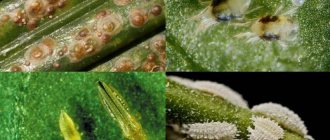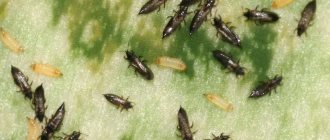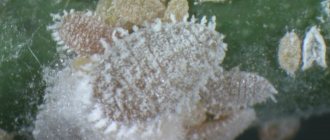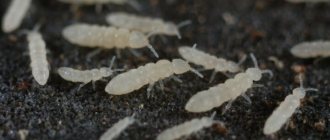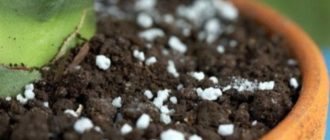Real Egyptian Lemongrass Tea Dried Ceremony (Lemon Grass, Lemongrass, Lemon Grass, Lemongrass), Natural Tea Additive, 100 g.
480 ₽ More details
Ahmad Tea Classic black tea, 200 g
166 ₽ More details
Vitamins for the heart and blood vessels
Almost every gardener is familiar with sciarids. The insect feeds on rotting plants, and the larvae are interested in the soil in which they settle. Thus, they cause harm. Sciarids are small in size, so at first glance they may seem harmless. This is wrong. Insects cannot immediately destroy plants, but they are carriers of various diseases.
Sciarida is a small flower midge
With a large amount of rotting organic matter, reproduction occurs even faster. Accordingly, the female lays eggs in the soil, from which larvae appear and eat the roots. As a result of exposure to insects, plants can die, so you need to know everything about sciarids - distribution, methods of disposal, prevention.
What does an insect look like?
Sciarides are a family of insects. This includes the fungus gnat or, in other words, the sciara fly. The insect represents the order Diptera.
The mosquito is small in size - up to 4 mm. The body is narrow and oblong in shape. The flying insect is black and gray in color. A characteristic feature is that the color becomes darker as they grow older. The fungus gnat has a round head with long antennae. The insect also has colorless fore wings. Despite this, they are endowed with the ability to fly.
The insect has small transparent wings
Protection by strengthening
| Small insect pests such as spider mites or thrips are clearly visible through a magnifying glass. |
- Algal limestone
, which is sprinkled on plant leaves, increases resistance to fungal diseases. In addition, it causes insect larvae to dry out.
- Algae extract
contains a lot of substances important for the structure of plants. It is available in liquid or powder form; both are applied to the leaves. This extract increases plant resistance to any pests.
- Silicic acid
included in many plant strengthening products. It makes fabrics stronger and increases resistance to harmful fungi.
- Essential oils
As plant strengthening products, they are usually sold under the name “Aromatic flower care product.” For indoor, balcony and tub plants they are sold in the form of sprays, and for spraying a large number of plants - in the form of a concentrate that needs to be diluted.
What stages of development does it go through?
Eggs are laid in moist soil. After 5–6 days, the larvae hatch. They have no legs and look like worms. If you look at the photo of sciarids, you will notice that the larvae are colorless (transparent), and the digestive system and black head are also visible. It is the dark color that distinguishes mosquito larvae from others. They can reach a size of up to 10 mm.
At this stage of development, insects cannot tolerate dry soil. If a person takes them out into the air, there is a high probability of the caterpillars dying.
After 7–14 days, the larvae pupate. The transition from pupa to adult occurs in 5 days. The life expectancy of adults does not exceed 7 days. But, despite such a short period, the number of eggs in a female can reach 300 pieces.
Biological agents
| Our advice: To combat scale insects and other pests, you can also use a leaf polish, although this is not a pest control product. Its effect is similar to that of oil-containing preparations: pests suffocate under the oil film. Be careful, though: some plants don't like leaf polish! |
- Pyrethrum
It is quite poisonous and affects the nervous system if it enters the bloodstream. Be careful in case of small wounds or cuts! Pyrethrum is found in sprays, powders and liquids. It helps against gnawing and sucking insects. It is not dangerous for bees. There are also drugs on sale that contain synthetic pyrethroids. But on the packaging of a real flower extract, it will be written “Natural Pyrethrum”.
- Paraffin oil
glues together the respiratory organs of scale insects, mealybugs and spider mites. But only plants with hard leaves tolerate drugs containing this substance. It is used for direct spraying of plants.
- Potassium soap
is also offered as a means for spraying plants. It also affects the respiratory organs of sucking insects. But at the same time it spares bees, lacewings, ladybugs and other helpers. Potassium soap is also easily tolerated by plants with soft leaves.
- Lecithin
– a remedy against powdery mildew; it comes in spray form.
Where can I meet
Sciarids are more common in Europe. Most often they live in house flowers. This place is the most beloved among the Sciarides. Insects settle in plants with moist soil. But it is possible that fungus gnats will appear in other places - the basement, the bathroom.
Read on topic:
Features of the life activity of ladybugs
14.11.2020
Description of chironomids and their possible danger to humans
14.11.2020
What do cutworms look like and what harm do they cause?
14.11.2020
What do goliath beetles look like and can they be bred at home?
14.11.2020
Midges can appear in high humidity
To get rid of sciarids, you first need to understand why they appeared in the room. The most common reasons:
- excessive humidity;
- plants are not properly cared for;
- purchasing an already infected plant;
- entry of insects through ventilation, windows or doors.
Attention! Fungus gnats love old pots, so they appear in them first. This also includes a poor drainage system.
After establishing the reasons why sciarids appeared in the room, it is necessary to take various methods against them.
General information
Every violet lover is familiar with these insects. Everyone knows the little flies that hover over potted plants. Sometimes there are almost none, sometimes there are hundreds. Who are they, these eternal companions of the gardener?
Photo 1. Female sciarid.
Soil mosquitoes of the family Sciaridae are distributed everywhere, but at the same time, they remain the least studied group in the order of dipterous insects (Diptera). Sciarids (Sciaridae) are living fossils; they are one of the most ancient groups of dipterous insects. Due to their small size and hidden larval phase, representatives of sciarids have not attracted the attention of researchers for a long time. Currently, this family has about thirty genera, uniting more than 1,700 species described by science. According to the most conservative estimates of experts, another 20,000 species will be described in the near future, mainly from tropical regions of the Earth. The fauna of Europe is less rich in sciarids - there are just over 600 species.
Most often we encounter representatives of the genera Sciara, Lycoriella and Bradysia. Externally, without a microscope, trying to distinguish them is almost useless. Some are a little less, others are a little more. Some are blacker, others are just a little lighter. Sciarids enter the volumes with plants either with the soil, or adult females, entering the room from the street, lay eggs in the moist soil. It is almost impossible to get rid of fungus gnats once and for all. If conditions exist for their feeding and reproduction, they will come to you again as soon as the chemicals expire.
Overmoistening of the substrate and a high content of quickly decomposing organic matter in it are the main conditions under which sciarids feel most comfortable and begin to multiply quickly.
Why is it dangerous?
It should be noted that no sciarid attacks on humans were observed. They do not suck blood or bite. To confirm these facts, American scientists specifically conducted research. Ground mosquitoes do not fly near your face. But, despite this, they can carry various dangerous diseases that harm not only plants, but also humans. For example, the disease can be transmitted through contact with infected flowers. Or if a person inhales mold spores that are carried by sciarid flies.
Mosquitoes negatively affect plant health. If larvae appear en masse in the soil, flowers will not develop and their appearance will deteriorate. Accordingly, they become lethargic. It can even go as far as lack of flowering. If a person notices all these signs in plants, it is necessary to quickly get rid of the insects.
Rules for using chemicals
You should always strictly follow the manufacturer's instructions and under no circumstances use chemicals intended to protect plants outdoors indoors. Chemical protective equipment should only be stored in places inaccessible to children and pets.
Handle residues with care as they are highly hazardous waste. Don't forget about self-defense; Wear gloves and try not to get it in your eyes or inhale the product. Do not use products marked with a skull symbol and classified according to the degree of danger as “T+”, which means “highly poisonous”, and “T” - “poisonous”. As a last resort, use drugs with a cross sign and the designations “Xn” - poisonous to a small extent, and “Xi” - irritating. “S” of the commercially available plant protection chemicals are not marked with any signs at all, because they are not at all dangerous.
How to fight
The fight against such insects must be comprehensive. That is, it is necessary to destroy mosquitoes at all stages of development. There are various methods for controlling sciarids, they are listed in the table.
| Name | Description |
| Special aerosols | The most popular are Raptor, Raid, Dichlorvos. It is better to place food, clothing and other items in a drawer before spraying. Furniture can be wrapped in film. The disadvantage of this method is that you need to leave the room for a while. You should also remember that such aerosols are harmful to pets, so they also need to be isolated for a while |
| Treatment of window sills, shelves and other places with plants | This method is used as a preventive measure against surviving insects. After spraying, wash the area thoroughly with soap and water. |
| Application of insecticides | They use Actellik, Aktaru, Fitoverm, Karbofos. Before use, chemicals should be diluted with water according to the instructions. Next, mix everything thoroughly. The resulting solution is poured into the soil. Course of use – 2 times. The interval between applications should be at least 7 days. For the best effect, it is not recommended to water the plant for 1 - 2 days after use. |
| Fighting sciarid larvae | Bazudin, Thunder will do. The top layer is replaced with a new one containing granules. When watering, the product dissolves and pests are destroyed. |
| Duct tape | Can be bought for flies. If this is not possible, you can use tape |
| Anti-cockroach products | For example, Mashenka’s pencil. It is applied to the top of the pot. Another use is to crumble a pencil and sprinkle it into the soil. |
| Egg fight | You can use Citropak in tablet form. To prepare, you need to dilute the drug in 5 liters of water. Pour the resulting solution into the soil. After the initial treatment, the result will be noticeable. For better results, the procedure can be repeated 1-2 more times. |
Common pests.
Aphids • Signs of damage: plant growth slows down, foliage may be sticky and deformed. • Methods of control: You can collect aphids with your hands, treat them with a stream of water, or use appropriate preparations.
Weevils • Signs of damage: holes can be found on the leaves; this pest is especially active at night. • Methods of control: We remove pests by hand. We water with water with pest control drugs diluted in it.
Mealybugs • Signs of damage: small, white, fluffy spots on the veins of leaves and shoots of plants. • Methods of control: remove with a cosmetic stick soaked in insecticide. Biological control methods can be used.
Spider mites • Signs of damage: red spiders, thin cobwebs on the leaves and frequent small specks. • Control methods: water the plants, as mites do not like wet soil
Biological control methods can be used.
Scale insects • Signs of damage: small, bronze insects sit firmly on the leaves and shoots of plants. • Methods of control: remove pests with a brush or cosmetic stick dipped in a suitable insecticide.
Springtails • Signs of damage: if you touch the ground, small, white beetles appear that jump quickly. • Methods of control: improve water permeability, add a little lime (careful if plants prefer acidic soil).
Whiteflies • Signs of damage: small, white flies on the leaves. May cause black plaque to appear. • Methods of control: an elusive pest, we use contact insecticide and biological control methods.
Prevention and pest control. Proper care and compliance with all requirements for growing indoor plants help prevent the occurrence of diseases and pests. Constantly inspect your plants for diseases and pests. Good luck to you.
What are the folk methods?
In addition to chemicals, there are traditional methods of combating fungus gnats. Most Popular:
- Collecting flying insects using a vacuum cleaner;
You can use a tobacco-based solution
- Place repellent products next to the pot. For example, dill, garlic, orange. With this method, insects will not be able to reproduce. When they enter the house, they will immediately fly away, as the smell frightens them.
- Purchase plants intended for feeding sciarids. For example, Nepenthes. The negative aspects of the technique are that the plant requires complex care.
- To process flowers, use a soap solution. To prepare, mix the ingredient with 1 liter of clean water. The plant needs to be treated at least 5 times with an interval of 7 days.
- Prepare tobacco solution. You need to take the ingredient in dry form and dilute it in 1000 ml of water. Leave for 2 days. Filter and add another 2 liters of liquid. Use the prepared solution up to 5 times. The interval must be at least 7 days.
- Use ash. After application, the environment becomes alkaline and sciarids cannot live in such a place. The ash must be scattered on the surface of the pot. When watering a plant, it will form an alkaline environment.
This video will help you learn more about indoor midges:
Control measures
The fight against sciarids, podurs, and soil mites is Sisyphean work. They will always appear, again and again, and the harm from them is insignificant. You need to pay attention to sciarids only when they become a real problem (when there are hundreds of flies, and the soil is literally moving with worms). Mass reproduction of these animals indicates poor agricultural technology, which needs to be corrected. A good result is obtained by adding ligocene (crushed coconut peel) to the soil composition. Water as the substrate dries. Avoid using soil with a large amount of undecomposed components (leaf dust and plant debris).
Before you start fighting, make sure that the flies flying in your apartment are sciarids, and not Drosophila (fruit flies) that flew to you due to the smell of stale jam, compote or overripe fruit.
If you still have to reduce the number of sciarids, you can use systemic insecticides (spray the soil with a solution). A good result is obtained by adding citromon or askofen to the water for irrigation (half a tablet per 3-4 liters of water). The drug Regent effectively destroys fungus gnat larvae. If you got Regent 80%, then 1 g of powder per 10 liters of irrigation water, if Regent 25, then 3 ml of the drug is diluted in one liter of water (30 ml/10 l).
When preparing the soil for sowing Gesneriaceae seeds, the soil should be well steamed. Seedlings are grown in hermetically sealed containers. It is desirable that even the drainage holes of such containers are inaccessible to flies.
If prevention
To prevent the appearance of insects indoors, certain rules must be followed. Namely:
- Before planting a plant, pay attention to the soil and try to always check it for cleanliness; there should be no plant residues;
- It is advisable to first water the new soil with potassium permanganate (solution) and cover it with charcoal;
- if you need to buy a new pot, after purchasing it, it is advisable to wash it in hot water and soap and, if possible, treat it with potassium permanganate;
- take care of drainage;
- there is no need to add too much organic fertilizer, such as manure;
- do not use bad water for irrigation, for example, some people, in order to save money, take liquid from the aquarium and the use of water with a green coating is especially prohibited;
- do not pour coffee or tea leaves into the tray;
- each time you water the plant, remove excess water from the tray;
- examine the plant for dead parts and remove them.
It is best to fight insects immediately after they appear. If you neglect this point, after a couple of days you can see not just one midge, but many. Moreover, the female will lay eggs, and larvae will appear from them. It is necessary to fight sciarids at any stage of development.
Chemical remedies
Chemicals also cannot be called a cure for all diseases, and they are by no means safe for the environment. Their use is justified only for especially valuable plants, when all other, more gentle, means have already been exhausted.
- You should always strictly follow the manufacturer's instructions and under no circumstances use chemicals intended to protect plants outdoors indoors.
Chemical protective equipment should only be stored in places inaccessible to children and pets. Handle residues with care as they are highly hazardous waste.
Don't forget about self-defense; Wear gloves and try not to get it in your eyes or inhale the product.
Do not use products marked with a skull symbol and classified according to the degree of danger as “T+”, which means “highly toxic”, and “T” - “poisonous”.
As a last resort, use drugs with a cross sign and the designations “Xn” - poisonous to a small extent, and “Xi” - irritating.
“S” of the commercially available plant protection chemicals are not marked with any signs at all, because they are not at all dangerous.
Description and appearance
Experts identify about 1.5 thousand species of this insect. But gardeners at home most often encounter only one of them, namely sciaridae.
Fungus gnat
The size of an adult insect is 3-4 mm. The fungus gnat has a narrow, elongated body and a rounded head. The color of the insect is gray or black. In the thoracic region there are three pairs of thin paws. In the frontal part there are elongated whiskers that help the insect navigate in space. The fungus gnat has one pair of transparent wings. Adults do not feed; their main function is to breed offspring.
Sciarid larvae
The larvae of the fungus gnat are worm-shaped and legless. Their body length at birth does not exceed 2 mm, and during development it reaches 10 mm. The larvae have a dark head and a transparent light body color, through which the intestines are visible. The mouthparts are gnawing type. Large larvae are capable of leaving a slimy trail on the soil surface as they move.
Whitefly
| This is a small white insect with wings. Its green larvae suck out the juice. Leaves may fall. Whiteflies reproduce very quickly. Whiteflies usually hide on the undersides of leaves. On the upper side of the underlying leaves, a shiny coating (honeydew, or honeydew) appears - insect excrement, on which sooty fungi ("black") subsequently develop, due to which the surface of the leaf becomes first white and then black. |
Fighting methods:
- Whiteflies do not like low temperatures, so you can move the plant to a cooler room. Since whiteflies fly, they can be caught using sticky strips (available at fly catching stores);
- Herbal infusions against insects - they are sprayed on plants. Garlic infusion is relatively effective. Pour crushed garlic cloves (150-170 g) into 1 liter of water and leave in a tightly sealed container for five days. For spraying, 6 g of concentrate diluted in 1 liter of water is sufficient. Keep in mind that folk remedies can help if there are not too many pests;
- Glue traps can be used to catch adults. To do this, take pieces of plywood or hardboard, paint them yellow or white and grease them with Vaseline, rosin with honey or castor oil. Insects, attracted by the bright yellow or white (preferably yellow) color, land on these baits and stick. When there are a lot of them on a piece of plywood, they wipe it and lubricate it again with the same solution. You can also use sticky fly traps;
- "Aktara" according to the instructions;
- "Aktellik" according to the instructions;
- "Verticillin J" according to the instructions;
- "Confidor" (20% VRK) according to instructions;
- "Mospilan" (20% RP) according to instructions;
- "Pegasus" (25% EC) according to instructions;
- "Fufanon" (57% EC) according to instructions;
- "Phosbecide" according to instructions.
Preventive measures
Preventive measures must be followed to prevent pests such as sciarids from infesting your indoor flowers. The following will prevent the appearance of the insects we are studying.
- The soil that you have prepared for planting or replanting a houseplant should be clean, free from residues and rot.
- Before pouring the soil into the pot, treat it with potassium permanganate and sprinkle with charcoal.
- You need to wash the pot with hot water before using it, and also disinfect it with the same potassium permanganate.
- Coarse sand, ceramic fragments, expanded clay, and gravel will provide drainage. Sprinkle it over the top layer of soil.
- Don't go overboard with organic fertilizers: add moderate amounts of compost and manure to the soil.
- Coffee grounds, tea leaves, and dairy products such as kefir and milk do not make good fertilizers.
- Houseplants should be watered exclusively with clean water.
- If there is excess water left in the flower tray after watering, it should be poured out.
- Plants should not be watered frequently. Only after the top layer of soil has dried can the watering procedure be repeated.
- Rotting remains of indoor flowers need to be disposed of in a timely manner.
If you comply with the above conditions, flower gnats will not appear in your plants at home.
